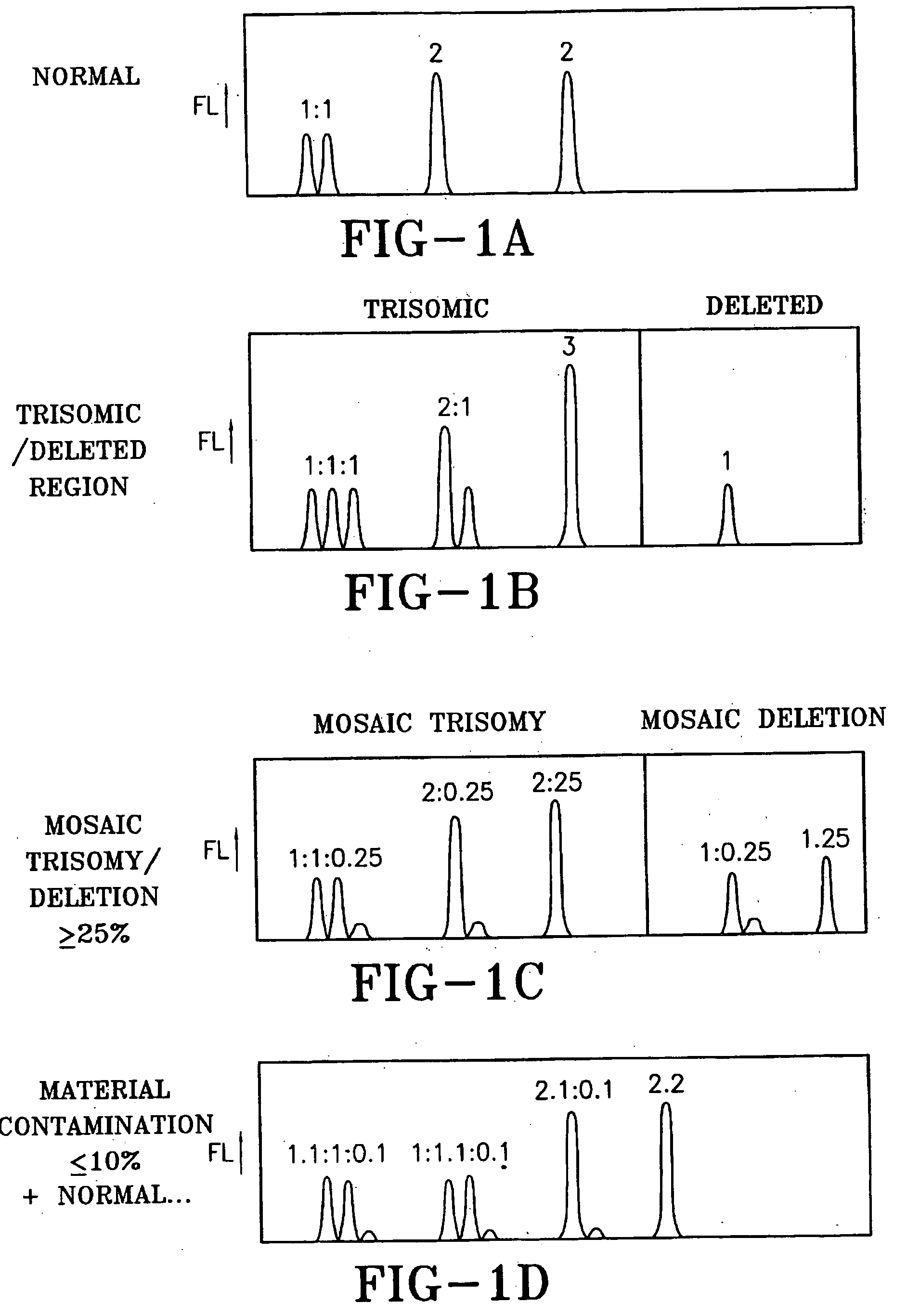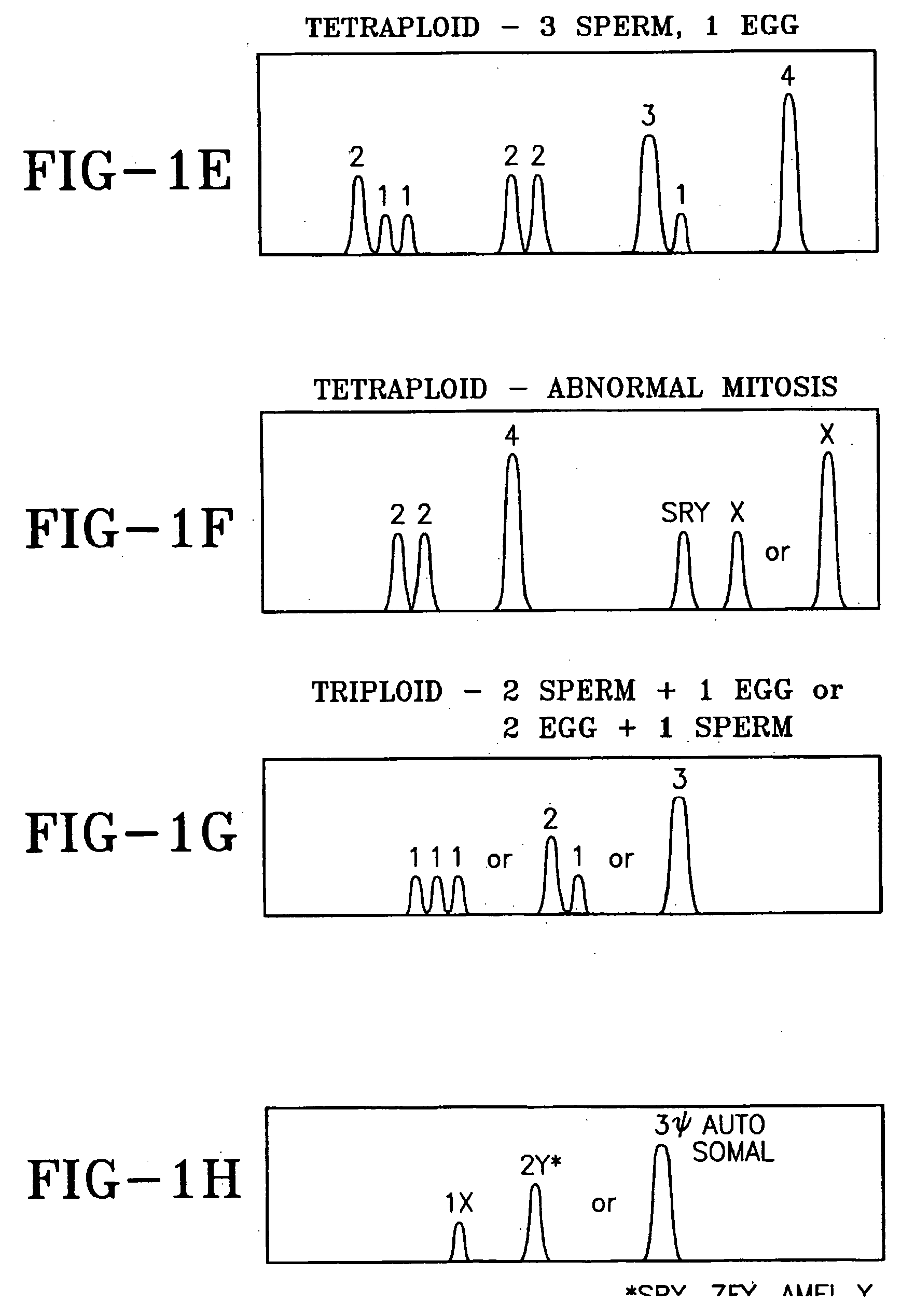Optimizing genome-wide mutation analysis of chromosomes and genes
a genome-wide mutation and gene technology, applied in the field of optimizing genome-wide mutation analysis of chromosomes and genes, can solve the problems of unbalanced gametes and zygotes, unbalanced translocations, and abnormal number of whole chromosomes, so as to improve the proportion of informative tests, improve the quality of life, and improve the effect of lifelong car
- Summary
- Abstract
- Description
- Claims
- Application Information
AI Technical Summary
Benefits of technology
Problems solved by technology
Method used
Image
Examples
Embodiment Construction
[0053] Described herein are methods to optimally construct nucleic acid kits to test for target copy number of the selected gene regions in the designated chromosome bands and in common genetic disease genes as well as common gene mutations in common genetic disease genes that together are required for normal growth and development. When genes in these banded chromosome regions are abnormal in number or sequence, viable abnormal fetuses may live to term and beyond.
[0054] Conducting a DNA test that identifies more fetal abnormalities than Giemsa-banded karyotyping requires searching the entire genome for important chromosome regions that when abnormal result in viable newborns. The most readily apparent abnormalities involve differences in the number of whole chromosomes or chromosome regions that result when one of a very large majority of chromosome rearrangements occurs. Therefore quantification of the relative number of target sequences is required to distinguish the normal auto...
PUM
| Property | Measurement | Unit |
|---|---|---|
| Fraction | aaaaa | aaaaa |
| Fraction | aaaaa | aaaaa |
| Fraction | aaaaa | aaaaa |
Abstract
Description
Claims
Application Information
 Login to View More
Login to View More - R&D
- Intellectual Property
- Life Sciences
- Materials
- Tech Scout
- Unparalleled Data Quality
- Higher Quality Content
- 60% Fewer Hallucinations
Browse by: Latest US Patents, China's latest patents, Technical Efficacy Thesaurus, Application Domain, Technology Topic, Popular Technical Reports.
© 2025 PatSnap. All rights reserved.Legal|Privacy policy|Modern Slavery Act Transparency Statement|Sitemap|About US| Contact US: help@patsnap.com


